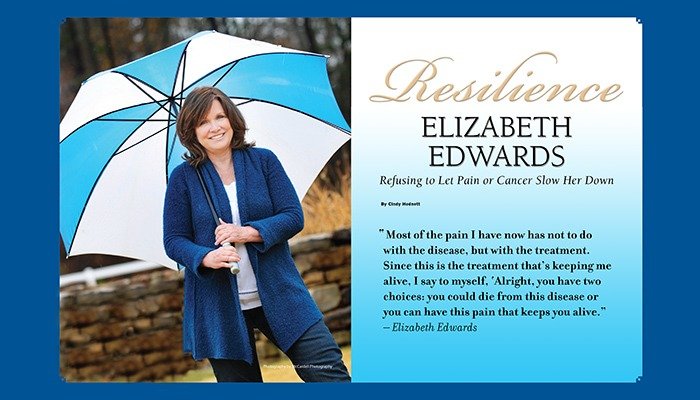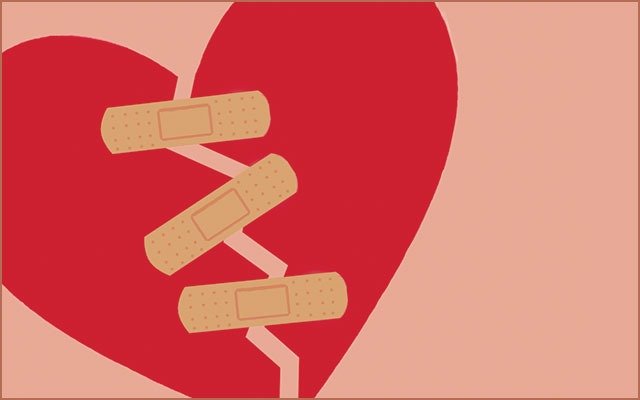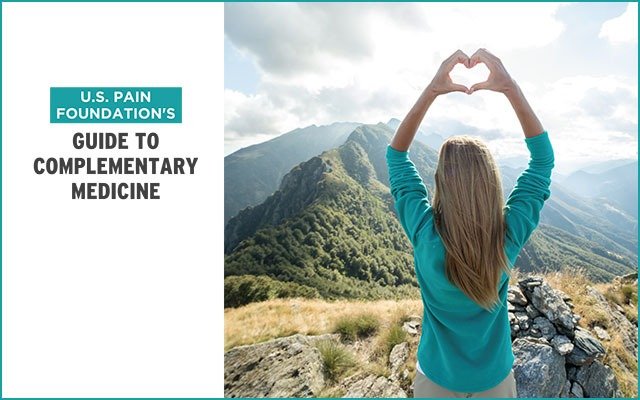Barby Ingle on CRPS


By definition, cheerleaders are enthusiastic supporters, passionate about their teams and eager to inspire others to action. But when Barby Ingle began battling chronic pain caused by a medical condition, injuries and then complex regional pain syndrome (CRPS), she had no idea she was starting down a path that would transform her into a cheerleader with an international audience.
Growing up, I had many acute injuries from athletics and cheerleading, but I was always able to overcome them quickly,” Ingle recalls. “The first time I experienced chronic pain was in 1997, when I developed endometriosis. I tried many different treatments, from medications to surgeries. Finally, in 1999, the daily pain was so intense that I decided to undergo a full hysterectomy.”
Ingle credits her childhood training as a cheerleader with helping her make this difficult decision. She says the sport taught her to never lose hope — and coming through the surgery was a major victory for her.
“To finally have relief from two years of constant pain was an accomplishment,” she says. “Little did I know that a few years later I would be tested like never before.”
Ingle says she started living her dream as the head cheer/dance coach at Washington State University and was founder of a cheer training company. Working in the field she had trained for made her feel invincible, but “life” intervened yet again.
More Pain, Little Hope
“Just before my 30th birthday, in 2002, I was rear-ended in a car accident and my life changed forever in eight seconds,” Ingle explains. “For the next three years, I searched for answers and followed step by step what my medical providers told me to do. I grew frustrated as I went from provider to provider searching for a way to overcome chronic pain once again.”
According to Ingle, many people don’t realize how debilitating chronic pain can be. She says that after the car accident she realized that some forms of pain were “unimaginable” unless experienced firsthand, and that her return to a “normal” life was elusive.
“Everything that could go wrong went wrong this time,” Ingle says. “I saw 42 providers, underwent multiple major and minor procedures — shoulder surgery, first rib removal, four pneumothoraxes and a full lung collapse, oral surgery due to tumors growing from a medication complication, many medication reactions, spinal epidurals and $35,000 in physical therapy. Not only did I not get better, I actually got worse.”
A Glimmer of Hope
Ingle’s pain and symptoms spread from her face, neck and shoulders to her arm and hand, and eventually to her entire body. While providers confirmed that her pain was real, they documented her symptoms as “bizarre.” Finally, her 43rd medical provider offered a glimmer of hope.
[pullquote]“I was tired of being a guinea pig and told him I needed to do my own research before I let him perform the test he wanted to do to confirm his diagnosis.” [/pullquote]
“He looked at my large notebook of records and said, ‘I think I know what you have,’” Ingle recalls. “I was tired of being a guinea pig and told him I needed to do my own research before I let him perform the test he wanted to do to confirm his diagnosis.”
A week later, Ingle underwent a ganglion nerve block procedure in her neck. She received a diagnosis of reflex sympathetic dystrophy (RSD, a/k/a CRPS), and while she found some relief in knowing what was wrong, Ingle says she was also disheartened to learn that treatment options were limited.
“I learned that if I hadn’t had all of the other traumas and procedures, then I might not have developed such a severe case of RSD,” Ingle explains. “During this time, I realized that some pains can’t be overcome so easily, but I never lost hope.”
Quality of Life, Building a Team & Integrative Treatment
Three years after her CRPS diagnosis, Ingle says she was “not living much of a life at all.” She spent days in bed, and when she did venture out, she required a wheelchair. She had radio frequency ablations and nerve blocks in addition to taking several medications. The integrative treatment approach took her pain levels down to a six, temporarily, but as soon as the meds wore off, Ingle was back to a pain level of nine or ten day and night.
Like many people with pain who search for effective treatments and diagnoses, Ingle learned that not all medical providers are created equal. She found that the most effective approach was to assemble a team of providers with different expertise who would work together and allow her to actively participate in her care.
“In 2007, I met one of the most recognized RSD(CRPS) doctors in the world,” Ingle recalls. “Dr. Robert Schwartzman was a keynote speaker at the Academy of Pain Management conference that year, and he spoke about infusion therapy for RSD patients and how it would become the standard of care. My husband and I got to speak with him after his presentation, and he offered me help.”
Ingle began infusion therapy in 2009. The effect was immediate and dramatic.
“I literally went into the hospital in a wheelchair and walked out on my own seven days later,” she says. “Since then, I have undergone booster infusions approximately every three months to stay in remission. I still use an integrative approach to living with RSD, including the infusions, oral orthotic, aqua therapy and counseling.”
As she began to live a more pain-free life, Ingle returned to the cheerleader role. Instead of sports teams, she began cheering on others who live with pain or with caregiving and life issues.
The New Life
“I was married for almost 10 years prior to my current marriage,” Ingle says. “Due to the strains of living with a chronic illness, I was not able to hold that marriage together. I went from the top of the world to food stamps and government assistance, and I didn’t know how or when I would be able to overcome the new physical challenges in life. I was at the lowest point in my life when I met Ken, who is now my husband.”
Ingle points out that Ken Taylor has now become one of her strongest supporters. “Ken saw something in me, which due to the pain and fight of my life I thought was gone” — the happy, positive person who was fighting to get back her life. Inspired, Taylor and Ingle began working together to learn more about RSD/CRPS and how they could overcome the challenges of living with a chronic disease as a family.
“It was a natural split of duties,” Ingle says. “I took over the non-physical aspects of daily life and got our lives organized. We learned together and overcame challenges together. A lot of times, I thought I had lost everything, and Ken taught me that I hadn’t. He showed me that I was still a great person with great attributes. He helped me realize that I was lucky to have had so many successes in life, and how proud I should be because they were experiences that even healthy people might never have had.”
Power of Pain Foundation
Part of Ingle’s new definition of cheerleader was finding away to reach others in similar situations. At a holiday dinner, the seed for Power of Pain Foundation was planted.
“It was Thanksgiving 2006,” Ingle says. “My family had seen me go more than three years with no medical diagnosis and improper medical care. The idea was brought up that if I was dealing with these issues and there were millions of others with the same disease, then those people would need assistance as well. Our consensus was that no one should have to go through what I had endured.”

By January 2007, the family had started the Power of Pain Foundation, founded to help patients and their families overcome the challenges of living with a nerve pain disease.
“According to the 2011 Institute of Medicine report, more than 100million Americans suffer with a condition involving chronic pain,” Ingle says. “Too many people do not understand the irreversible harm that improper and untimely care can have. The issues that are blocking access to proper care range from poor insurance company practices (step therapy, specialty tier) to a lack of education for providers and patients. The POPF empowers people in pain with tools to overcome the barriers preventing effective pain management with appropriate tools and mentoring.”
Ingle says POPF empowers the pain community to take action to improve their quality of life. The foundation helps identify, prioritize and drive awareness of key issues, advocates for responsible pain care and collaborates with key decision-makers to find workable solutions.
The POPF advocates for a variety of chronic illnesses including idiopathic neuropathy, fibromyalgia, reflex sympathetic dystrophy, juvenile diabetes, arthritis, Lyme, lupus, spinal cord injuries, cancer pain and mental health issues associated with pain.

“When I first began to deal with RSD symptoms, I felt alone and isolated, and I didn’t have the knowledge to get through the medical system on my own,” Ingle says. “Health care providers across the country now tell me that because of hearing stories like mine, they were able to recognize and diagnose others more quickly. I realized that each time I spoke about what happened to me I was providing hope to others in similar situations.’
Her POPF cheerleader role includes working with media outlets and celebrities to spotlight chronic pain.
“Putting faces to pain is helpful in reducing the stigma,” Ingle explains. “The spotlight on chronic pain through community resources such as local media outlets advances public knowledge and helps society better provide for citizens with pain.
“My most memorable experiences of helping others come from being an active part of pain events,” Ingle concludes. “In these moments, I realize how much I can touch others and how hearing their stories helps me. We are not alone in the fight against pain.”
PainPathways Magazine
PainPathways is the first, only and ultimate pain magazine. First published in spring 2008, PainPathways is the culmination of the vision of Richard L. Rauck, MD, to provide a shared resource for people living with and caring for others in pain. This quarterly resource not only provides in-depth information on current treatments, therapies and research studies but also connects people who live with pain, both personally and professionally.
View All By PainPathways






